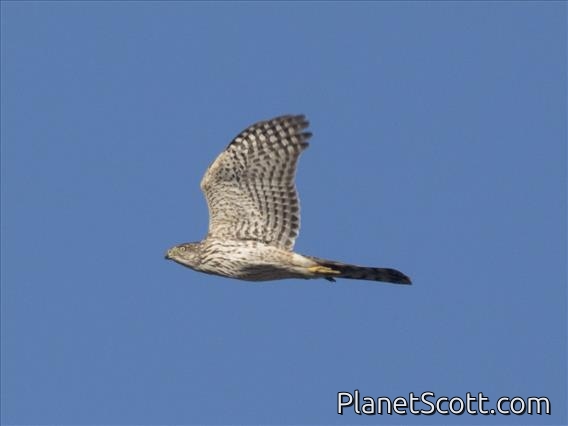Cooper's Hawk (Astur cooperii)

Coopers Hawk (Accipiter cooperii)

Cooper's Hawk (Accipiter cooperii)

Cooper's Hawk (Accipiter cooperii)

Cooper's Hawk (Accipiter cooperii)




×





Coopers Hawk (Accipiter cooperii)

Cooper's Hawk (Accipiter cooperii)

Cooper's Hawk (Accipiter cooperii)

Cooper's Hawk (Accipiter cooperii)
About Cooper's Hawk (Astur cooperii)
- Kingdom: Animals
- Phylum: Chordates
- Class: Birds
- Order: Hawks, Eagles, Kites, and Allies
- Family: Hawks, Eagles, and Kites
Cooper's hawk is a medium-sized hawk native to the North American continent and found from southern Canada to Mexico. This species was formerly placed in the genus Accipiter. As in many birds of prey, the male is smaller than the female. The birds found east of the Mississippi River tend to be larger on average than the birds found to the west. It is easily confused with the smaller but similar sharp-shinned hawk.
Source: Wikipedia
Visits
-
2005-12-15
Point Reyes National Seashore, United States of America -
2006-10-08
Marin Headlands, United States of America -
2007-01-05
Bernal Hill, United States of America -
-
2008-02-18
Santiago, Mexico -
2009-10-12
Bernal Hill, United States of America -
2009-11-07
Pinnacles National Monument, United States of America -
2010-01-03
Sacramento National Wildlife Refuge, United States of America -
2010-02-14
Teotihuacan, Mexico -
2010-09-06
Bernal Heights - Neighborhood Garden, United States of America -
2010-10-30
Miller Meadow Forest Preserve, United States of America -
2012-12-13
Heron's Head Park, United States of America -
2013-09-08
Bernal Hill, United States of AmericaSeen flying low over Precita @ Bryant briefly landing in tree. Rounded long-tailed accipiter. -
2014-01-14
Candlestick Park, United States of America -
2014-03-10
San Simeon SP, United States of America -
2014-06-01
Bayview Park, United States of America -
2014-06-22
Redwood Valley, United States of America -
-
-
-
-
-
-
-
-
-
-
-
-
-
-
-
-
-
-
-








